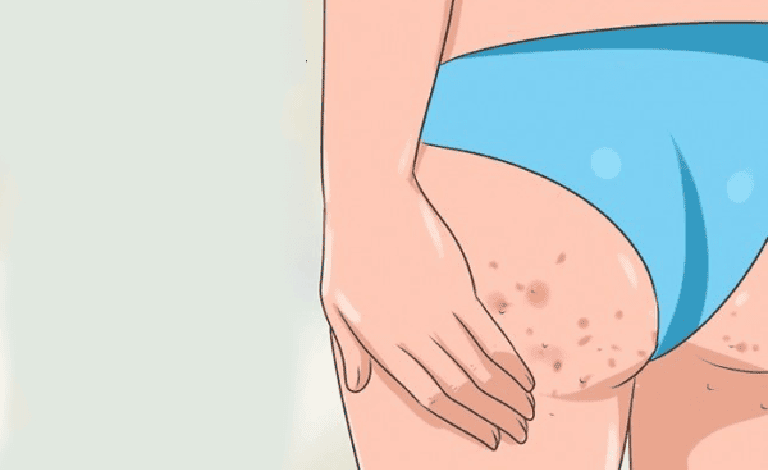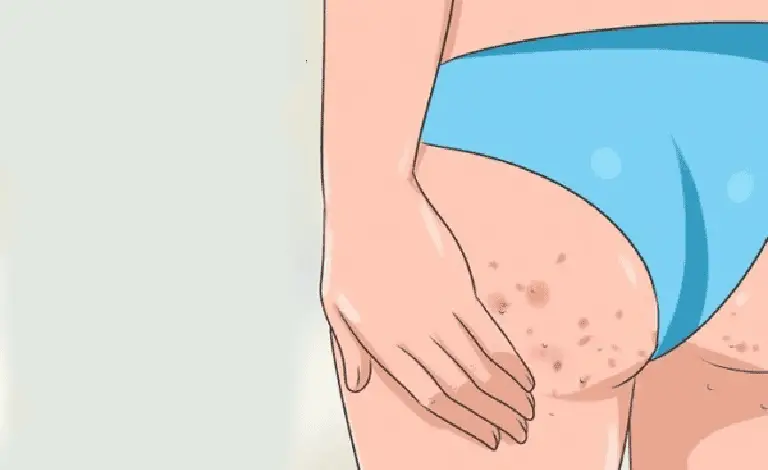Keratosis Pilaris on Buttocks Explained: A Beautician's Guide
As a beautician, you often encounter a variety of skin conditions, and keratosis pilaris is one that frequently presents itself. This common skin condition, often referred to as 'chicken skin,' can be particularly bothersome when it appears on the buttocks. In this article, we will delve into the intricacies of keratosis pilaris on buttocks explained, helping you better understand and address this issue for your clients.
Keratosis pilaris is characterized by small, rough bumps that appear on the skin, commonly on the upper arms, thighs, and buttocks. While it's harmless, it can be aesthetically displeasing for many, leading them to seek advice from professionals like you. By understanding the causes, symptoms, and treatment options, you can provide valuable guidance to those affected.

What Causes Keratosis Pilaris?
The condition occurs when too much keratin, a protein that protects the skin from infections and other harmful things, builds up and blocks the hair follicles. This results in the formation of the distinctive bumps associated with keratosis pilaris. While the exact reason why some individuals produce excess keratin is not entirely understood, factors such as genetics, dry skin, and other skin conditions like eczema may contribute to its development.
It's important for beauticians to recognize that while keratosis pilaris is not preventable, it can be managed effectively. Regular exfoliation and moisturizing can help reduce the appearance of the bumps. To learn more about the differences between similar conditions, consider visiting Keratosis Pilaris vs Butt Acne.
Identifying Symptoms on the Buttocks
The appearance of keratosis pilaris on the buttocks is similar to its manifestation on other parts of the body. Clients may describe a sandpaper-like texture, with small, flesh-colored or red bumps. These bumps might be more pronounced in colder months when the skin tends to be drier. While not painful, the bumps can sometimes cause itching or minor irritation.
As a beautician, it's crucial to reassure your clients that this condition is common and manageable. Direct them towards a consistent skin care routine that includes gentle exfoliation and the use of hydrating products to help smooth the skin. For further insights into managing full body breakouts, check out this guide on treating full body breakouts.
Effective Treatment Options
While there is no cure for keratosis pilaris, several treatment options can improve its appearance. Encourage your clients to incorporate these strategies into their skincare regimen:
- Regular Exfoliation: Gently exfoliating the affected area can help remove dead skin cells and prevent follicle blockage. Recommend products that contain alpha or beta hydroxy acids.
- Moisturizing: Daily application of a rich moisturizer can help soften the skin. Look for products with ingredients like urea, lactic acid, or glycerin.
- Professional Treatments: Consider suggesting professional treatments such as chemical peels or microdermabrasion for more stubborn cases.
For more detailed information on treating keratosis pilaris, you can refer to the Mayo Clinic's guide.
Addressing Client Concerns
As a trusted beautician, your clients look to you for advice and reassurance. By understanding the condition and its management, you can ease their worries and help them achieve smoother skin. It's essential to communicate that while keratosis pilaris is a chronic condition, its appearance can be significantly minimized with regular care.
For more insights into how lifestyle and environmental factors might contribute to skin issues, consider discussing the potential impact of acne from dirty gym equipment with your clients.

Frequently Asked Questions
Can diet affect keratosis pilaris?
While diet is not directly linked to keratosis pilaris, maintaining a balanced diet rich in vitamins and essential fatty acids can support overall skin health.
Is keratosis pilaris contagious?
No, keratosis pilaris is not contagious. It is a genetic condition that cannot be spread from person to person.
How long does it take to see improvement?
With consistent care, clients can expect to see improvement in the texture of their skin within a few weeks to months, although results can vary based on individual skin types.
Understanding and addressing keratosis pilaris on buttocks explained can significantly enhance your client services, providing them with relief and boosting their confidence. Remember, your expertise is invaluable in guiding them toward healthier skin.

